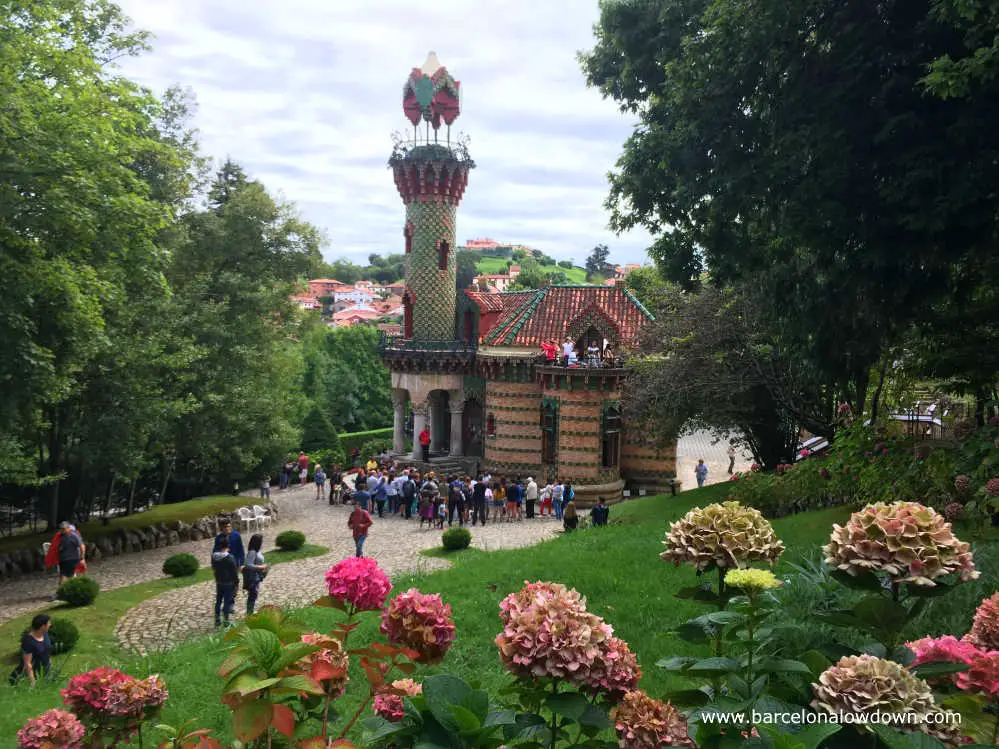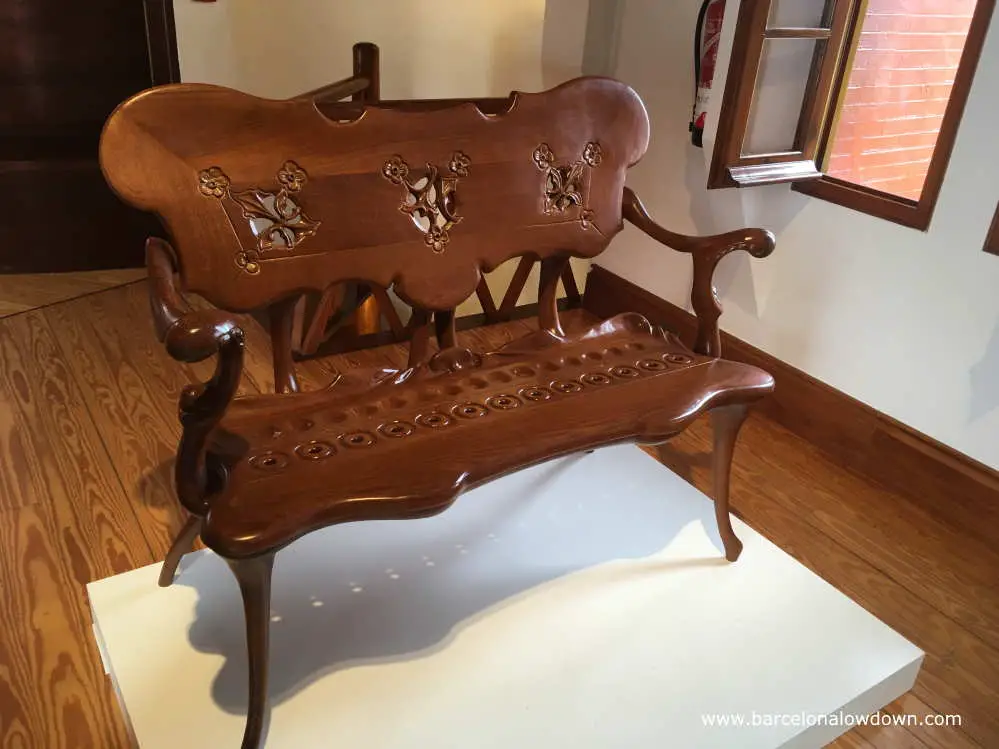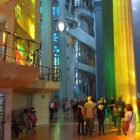Born in Reus in 1852, Antoni Gaudí moved to Barcelona to study architecture when he was eighteen years old. After finishing his studies, he began working for some of the city’s wealthiest residents. In the years which followed, his ground-breaking and fanciful designs helped transform the city into what we see today.
Despite the fact that most of his artistic legacy is located in Catalonia. Gaudí also designed a few buildings in other parts of Spain. The best known of which is El Capricho (the whim) in Comillas, a small coastal town near Santander.

History of El Capricho de Gaudí
During the 19th century, many Spanish entrepreneurs immigrated to the Americas (mainly Cuba) to seek their fortune. Most of them didn’t plan to stay there. Instead, their intention was to make as much money as possible and then return to live in their hometown.
The ones who succeeded were known as Indios or Americanos and, upon returning home, built themselves fancy palaces. Some of the richer and more altruistic Indios also donated money to their towns, often building theatres, schools, roads, and hospitals.
One such Indio was Máximo Díaz de Quijano who in 1883 contracted Antoni Gaudí to design him a summer home to rival that of his brother in law the Marquis of Comillas who had also made his fortune in the Americas.
Gaudís exuberant design combines a mixture of Oriental and Moorish influences, both of which were fashionable at the time.
Máximo Díaz played the piano and was also a keen naturalist. Gaudí incorporated both hobbies into the design of the house. High ceilings give great acoustics and the large glass conservatory on the south-facing side of the property is ideal for plants. Not to mention the distinctive yellow sunflowers which cover the outside of the building.
Despite the fact that El Capricho’s owner reputedly described the house as “small but comfortable”. The building, which took two years to build, was clearly designed to impress. A 720 metre square bachelor pad near the beach.
Sadly, Máximo Díaz de Quijano died in June 1883 at the age of 42. Just one week after moving into his new home.

Visiting El Capricho de Gaudi in Comillas
El Capricho (aka La Villa Quijano) is one of Gaudí’s earliest designs and belongs to what is known as his Oriental Era. Other buildings from this period include Palau Güell and Casa Vicens which was built at the same time and has many similarities.
Set in a tree-lined garden, and surrounded by rhododendron plants, the structure’s extravagant exterior is decorated with ceramic sunflowers and ornate wrought-iron balconies. Not to mention a tall tower covered with green tiles designed to resemble a minaret.
Comillas is on the cooler north coast of Spain so Gaudi designed the house to make the most of the available sunlight. The building’s u-shaped floorplan was built around a large south-facing conservatory, designed to heat up during the day and then radiate heat into the rest of the house during the evening.
Despite the exotic exterior and the intelligent use of natural light, the interior of the house is fairly traditional. The lower ground floor contains the kitchen and storerooms. Above this, the ground floor accommodates luxurious living quarters where Diaz would have entertained visiting friends and family members. Above this, the attic was occupied by the staff who worked in the house.

Location
Barrio Sobrellano, Comillas, Cantabria
Opening times
The house is open from Monday to Sunday and free guided tours start regularly throughout the day.
Summer opening times (July to September): 10:30 – 21:00
Spring and autumn (March to June and October) 10:30 – 20:00
Winter opening times (November to February) 10:30 – 17:30
Ticket prices
Standard: €7.00
Children (7 to 14): €3.00
Under 7 years: FREE
Time needed to visit El Capricho de Gaudí
You should allow around an hour to visit the house at a leisurely pace.

History of Comillas
Set on the rugged Cantabrian coast, Comillas started out as a whaling and fishing port during the Middle Ages.
Towards the end of the 19th century, Comillas became popular among the Spanish aristocracy and wealthy industrialists, many of whom built large summer residences. The town was briefly the capital of Spain when King Alfonso XII held a meeting with his ministers there in September 1881.
Today Comillas attracts tourists who come to see the Art Nouveau buildings and take a walk along the beach.
What to see in Comillas
- El Capricho de Gaudí
- The University of Comillas
- Sobrellano Palace
- Chapel / Pantheon of the Marquis of Comillas
- Monument to the Marquis of Comillas
- The Cemetery of Comillas
- Casa del Duque
- Comillas mediaval town centre
- The 3 Caños Fountain
- Comillas beach
Other places to visit near Comillas
Other places to visit in the area include:
- Santillana del Mar
- Altamira Caves
- Picos de Europa National Park and Fuente Dé
- Potes
- Faro del Caballo
- Cabezón Sequoia Forest
- Playa de Valdearenas and other beaches on the Costa Quebrada
- Santander
- Bilbao
- Bermeo
How to get there
By Car
Comillas is on the C135 coast road between Santillana del Mar and San Vicente de la Barquera. We visited as part of a two week road trip on the way from the Picos de Europa to Bilbao.
Free car parking is available in the town and near to the beach.
By Bus
Autobuses la Cantabrica run regular bus services to Comillas from Santander and other towns nearby.
Map
Calle los Arzobispos, 13, 39520 Comillas, Cantabria, España





This is a mistake ;)
“El Capricho de Gaudí, Comillas
Born in Reus in 1952, Antoni Gaudí moved to Barcelona to study architecture….”
Antoni Gaudi was born in 1852 !!
:)
Hi Anselm,
Thanks for pointing out the error, I’ve now corrected it in the article.